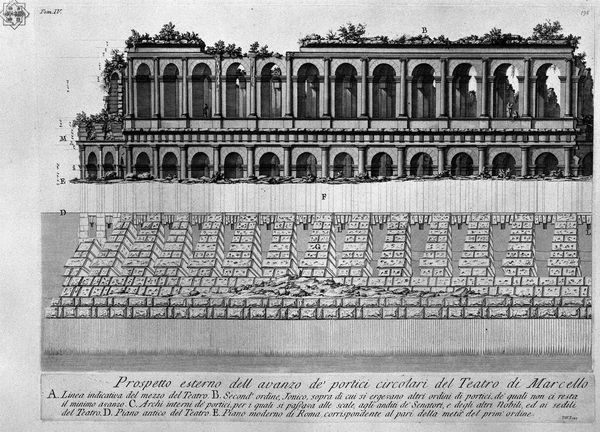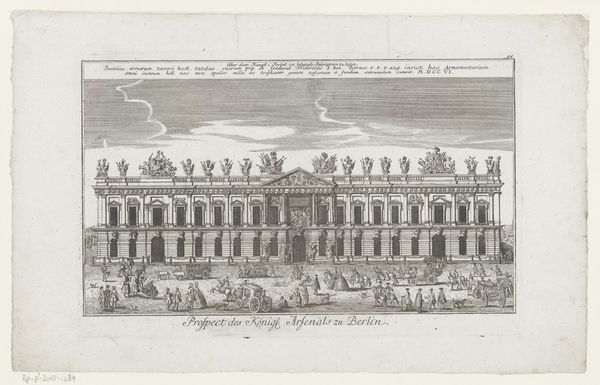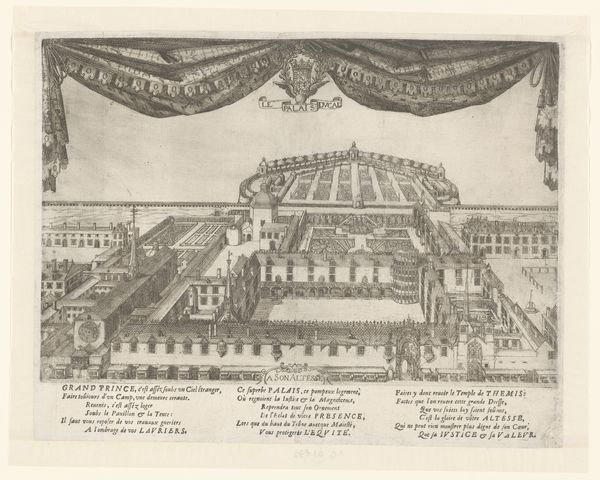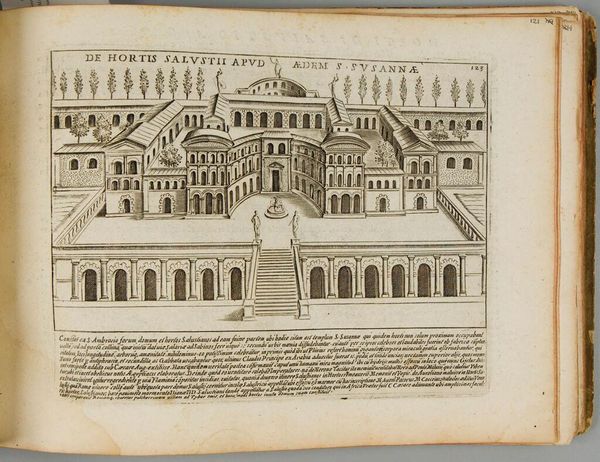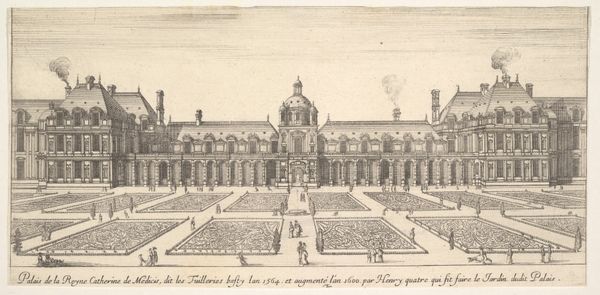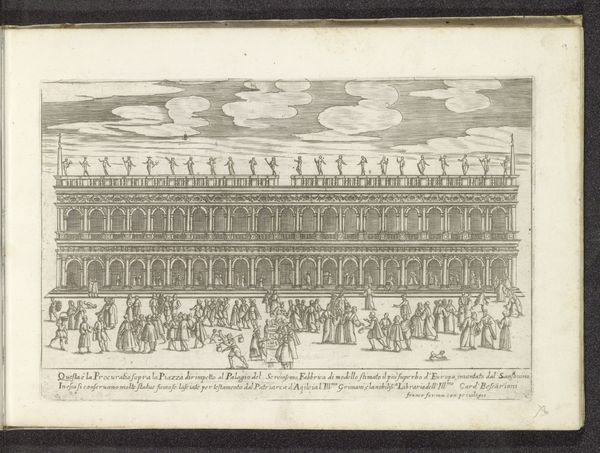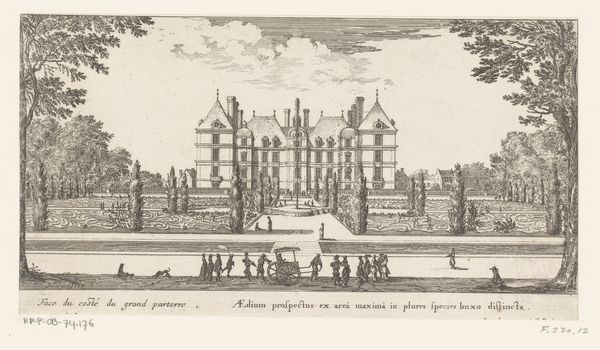
#
aged paper
#
script typography
#
hand drawn type
#
hand lettering
#
personal sketchbook
#
hand-drawn typeface
#
fading type
#
stylized text
#
thick font
#
handwritten font
Dimensions: height 392 mm, width 1200 mm, height 51 mm, width 1200 mm
Copyright: Rijks Museum: Open Domain
Curator: Before us is Giovanni Battista Piranesi's "Theater van Marcellus te Rome," created around 1756-1757, part of the Rijksmuseum's collection. Editor: It strikes me as a study in contrasts. The crisp lines of the architectural rendering against the evident decay hinted at through its ruinous state—almost a melancholic meditation on time and the hand of man. Curator: Absolutely. Piranesi's works are fascinating because they're not just documents. They highlight Rome's classical past to critique contemporary society. This piece, likely an etching, portrays the Theater of Marcellus, showcasing how even in its ruined form, it still commands respect, representing an ideal of civic virtue long lost to the artist's present. Editor: Etchings… such an intricate process. Think of the labor involved: coating the metal plate, carefully incising the design through the wax, the acid bath… it speaks to a deep understanding of materials. This wasn't just about documenting the architecture; it's about a deep engagement with a laborious method connecting him materially to past craftsmen. Curator: And consider the theatre itself. Beyond its physical presence, it embodies the role of art in the public sphere. Roman theatre was integral to political life; performances often carried messages reflecting the ruling powers and cultural values. This print invites viewers to reflect on that power and on their relationship to cultural history. Editor: Yes, the theater as a material site but also as a site of labor, performance, and social engagement. It moves beyond aesthetics to questions of production, consumption, and, crucially, the etching process democratizing Piranesi's views across society. How did it shape Italian identity, even create cultural heritage tourism? Curator: Exactly. By circulating these images, Piranesi shaped a visual understanding of Rome’s significance, fueling cultural identity but also establishing himself as a cultural authority. Editor: It makes me consider: who benefits from this romantic vision of Roman decay? While aesthetically striking, perhaps the labor that sustained it is also buried here. Curator: An excellent point. This piece pushes us to acknowledge not just the visible splendor but also the socio-economic structures that enabled it. Editor: Leaving us to wonder whose stories get amplified through materials like these, and whose disappear completely in the process.
Comments
No comments
Be the first to comment and join the conversation on the ultimate creative platform.
